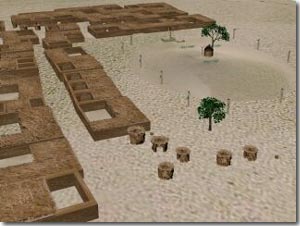| |
|||||
|
|||||
KOPTOS -- QEBTU -- KUFT
-- COPTOS |
|||||
 |
|
||||
Min was worshiped by the miners and prayers and thanks to the god have been found at Hammamat. Koptos was also associated with the goddess Isis, who, according to legend, found part of Osiris' body there. Koptos functioned as a starting point for expeditions to Punt (in modern Somalia) and the town was still of importance in Greco-Roman times. It was the terminus of a caravan route from Berenice on the Red Sea, and from here the gems, silks and spices of distant India and China reached Egypt and the Roman Empire. Koptos was built up by Roman emperor Augustus. It fell to the Blemmyes in the mid-3rd century AD, and was almost destroyed by the emperor Diocletian in 292. It later became a Christian community, lending its name to the Coptic Christians of Egypt and also to the English word "Egypt" itself, via the Greek name Aegyptos. The present-day village of Qift is on the site.
|
|||||
Home | Nile Valley | Dynasties | Wealth | Divinity | Temples | Hieroglyphs | Mysteries
|
|||||